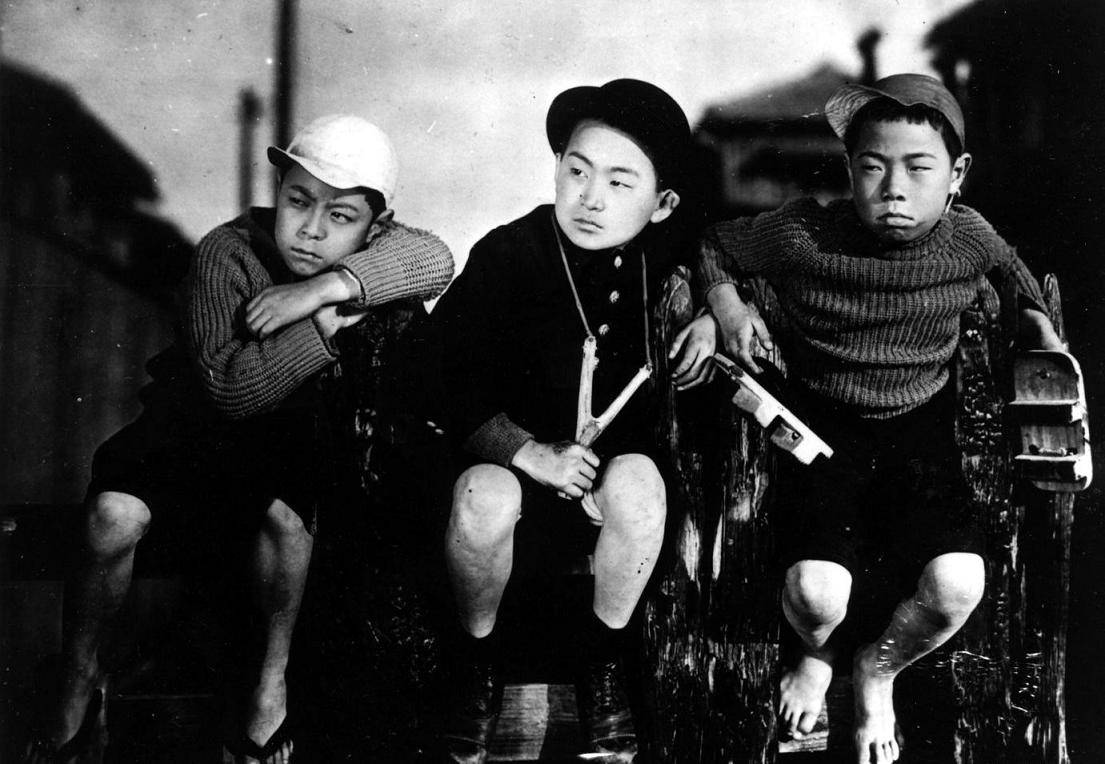 |
| Kinuyo Tanaka and Ureo Egawa in Where Now Are the Dreams of Youth? |
A blog formerly known as Bookishness / By Charles Matthews
"Dazzled by so many and such marvelous inventions, the people of Macondo ... became indignant over the living images that the prosperous merchant Bruno Crespi projected in the theater with the lion-head ticket windows, for a character who had died and was buried in one film and for whose misfortune tears had been shed would reappear alive and transformed into an Arab in the next one. The audience, who had paid two cents apiece to share the difficulties of the actors, would not tolerate that outlandish fraud and they broke up the seats. The mayor, at the urging of Bruno Crespi, explained in a proclamation that the cinema was a machine of illusions that did not merit the emotional outbursts of the audience. With that discouraging explanation many ... decided not to return to the movies, considering that they already had too many troubles of their own to weep over the acted-out misfortunes of imaginary beings."--Gabriel García Márquez, One Hundred Years of Solitude
Search This Blog
Showing posts with label Tatsuo Saito. Show all posts
Showing posts with label Tatsuo Saito. Show all posts
Sunday, May 7, 2017
Where Now Are the Dreams of Youth? (Yasujiro Ozu, 1932)
Thursday, March 9, 2017
Every-Night Dreams (Mikio Naruse, 1933)
 |
| Tatsuo Saito and Sumiko Kurishima in Every-Night Dreams |
Wednesday, March 1, 2017
Three Silent Films by Ozu
 |
| Yasujiro Ozu |
I Flunked, But.... (Ozu, 1930)
Tokyo Chorus (Ozu, 1931)
I think the films of Yasujiro Ozu are the perfect exemplar of that powerful task of motion pictures: to enlarge human sympathies. Ozu typically does it by working in his characteristic milieu: the family. Most of us have families, and when we don't (or when we recognize intolerable flaws in the ones we find ourselves in), we form something to substitute for them: clubs, cliques, fraternities, political parties. These three silent movies, lesser or little-known parts of Ozu's oeuvre, shine with their director's deep understanding of human connections. They also document the impact of the Great Depression, not just on Japan but on daily lives around the world. Two of them are about actual nuclear families, the other about a kind of surrogate family. They range from crime melodrama to slapstick comedy to a domestic drama threaded through with humor. All of them reveal Ozu's knowledge of American genre film as well as his ability to transform the generic into the personal.
 |
| Emiko Yagumo and Tokihiko Okada in That Night's Wife |
That Night's Wife begins with a touch of gangster film as we watch the police patrolling the nighttime streets, rousting a homeless man from his perch between the towering columns of a building, then witness a daring robbery of an office by a man masked with a bandanna and the police pursuit that follows. But we gradually learn that the man (Tokihiko Okada) has committed the robbery because he has a sick child and can't pay the doctor. Most of the film takes place in his small apartment, where his wife (Emiko Yagumo) is tending to the child, who the doctor says will be all right if she survives the night. Then a detective (Togo Yamamoto), who has posed as a cab driver and brought the man home, arrives. There's a standoff between the couple and the detective in which, after trying to stay awake all night, the detective prevails. But the film ends with an unexpected turn that in other hands might come off as sheer sentimentality but in Ozu's manages to feel like the working out of an ethical dilemma.
 |
| Tatsuo Saito in I Flunked, But.... |
 |
| Tokihiko Okada in Tokyo Chorus |
Saturday, July 2, 2016
I Was Born, But.... (Yasujiro Ozu, 1932)
 |
| Hideo Sugawara, Seiichi Kato, and Tomio Aoki in I Was Born, But.... |
Subscribe to:
Comments (Atom)